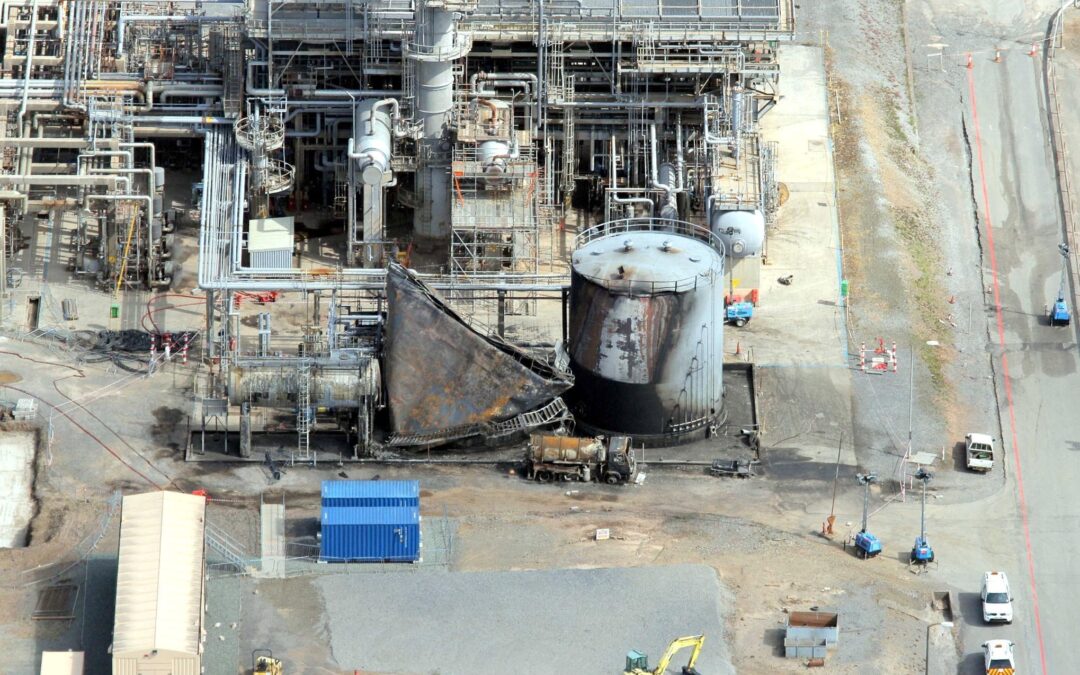The HSE Report on the investigation of the explosion at the Chevron Pembroke Refinery states they were unable to provide a definite answer for the source of ignition. They claim two potential sources which may have set off the explosion.
The first possible cause for the ignition is pyrophoric material, which ignites when exposed to the appropriate amounts of air. For an ignition to occur the material should be extremely dry. Prior to opening the tank, the contents were exposed to heating coils. However, there was no airflow to fully dry the material, hence this possibility was deemed improbable.
A more possible cause of ignition was static. Electrical charges are created is materials due to movement across their surface. If those charges cannot be released into the ground, potential energy could build up on the surface of the material. If two materials of different charges and states come into contact, sparks could be created. Static accumulated on the steel pole which was used to weigh down the non-conductive PVC suction hose used by the contracting crew. It was discovered that this was common practice for B&A Contractors when using the vacuum tanker. The pole was made of galvanised steel, which is considered as a good conducting medium, however, the pole was not grounded i.e. separated from the earth by the hose. Hence, potential energy accumulated on the hose could have been discharged from the surface of the scaffold pole as high energy sparks. Those sparks would have been more than enough to cause the explosion considering the minimum ignition energy (MIE) for hydrocarbon fuels is 0.2 – 0.3 mJ at 25°C and atmospheric pressure.
Another potential source of ignition, not outlined in the HSE report, was a mechanical spark generated by the scaffold pole hitting the tank shell. Mechanical sparks can be caused when two different metals come into contact with each other by friction, grinding, impact or collision. They are small particles, which because of impact are broken off from the surface of one of the two colliding surfaces. During the process, the contractors were having trouble with the suction, in the radio transitions they reported ‘It must be stuck or something, it’s not sucking anything’. It is possible that during the process the scaffold pole attached to the hose, collided with the tank shell, creating enough impact to cause an ignition spark. When dealing with flammable materials and hazardous areas it is extremely important to understand the possible ignition sources that could cause an accident like the Chevron Pembroke Explosion.
Occupli Consultancy specialists provide practical solutions and advice to all our clients in all areas of ATEX and process related safety concerns. Our team work to legislative requirements and benchmark against industry best practice to produces assessments for our clients. Occupli Consultants have carried out ammonia risk assessments in a range of different industries including medical devices, pharmaceutical and food industries.
If you require consultation on process or ATEX safety issue, reach out to our team of consultants here

